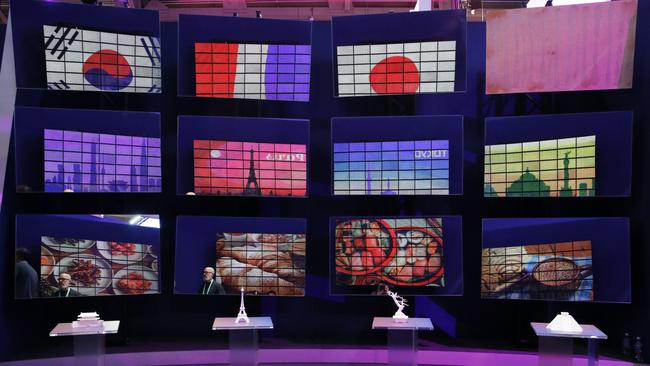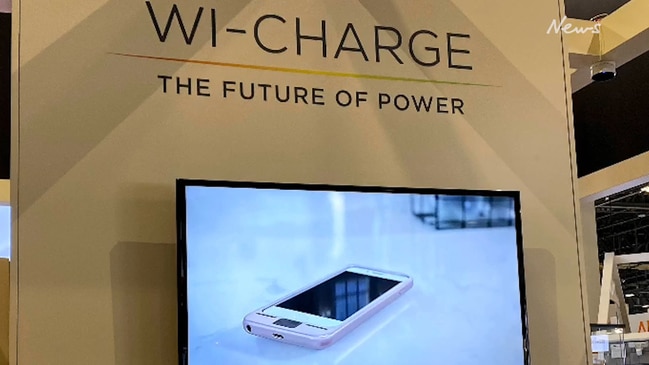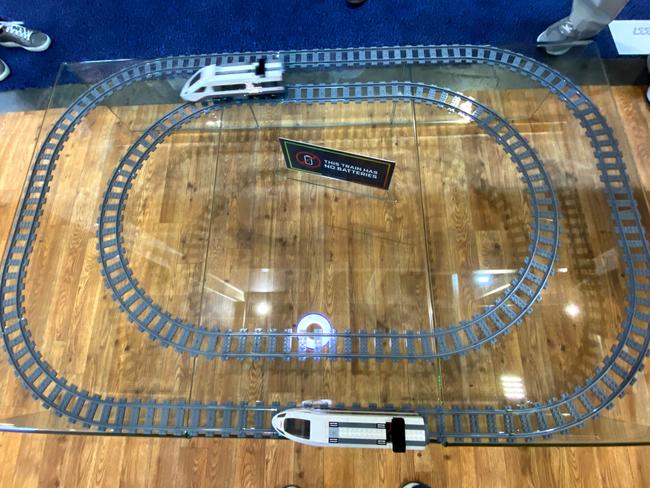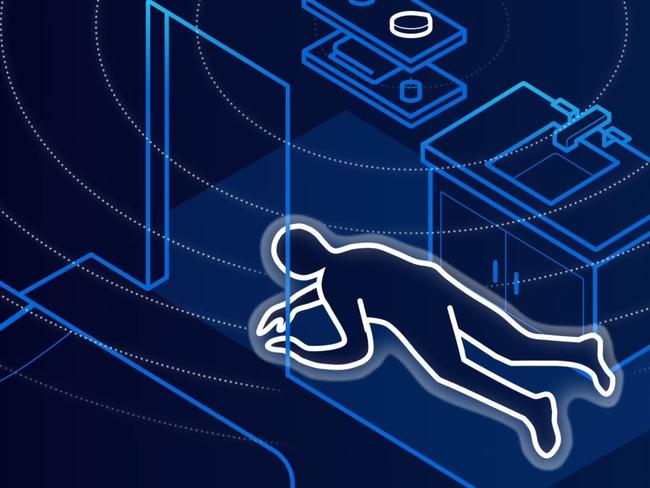Technology that will change our daily lives
Beyond the sparkling gadgets, the Consumer Electronics Show in Las Vegas displayed some extraordinary and groundbreaking technology.

After you’ve tried Hyundai’s flying taxi or the bike that rides on water at the Consumer Electronics Show in Las Vegas, you start to think more about future trends. Here are the takeaways from the leading tech conference — breakthroughs that may have a greater effect on our daily lives.

Solid-state batteries
Debacles such as the Samsung Note7 may be a thing of the past. Two years ago we learned the phone’s batteries were prone to overheating, catching fire and exploding in people’s hands. Batteries in self-balancing skateboards, also known as hoverboards, triggered fatal fires in homes and a shopping centre.
Solid-state batteries may be the answer. At CES, The Australian watched as a solid-state battery cell was stabbed with a knife and cut with scissors. The battery is not only safe after such attacks, it still works.

Our current lithium-ion batteries are like ice-cream sandwiches, solid on the outside but with a flammable polymer gel or liquid electrolyte at its centre. SSBs have solid centres with electrolytes designed not to catch fire and explode when they get hot.
SSBs have been available in wearable tech and medical devices such as pacemakers, but they’re now being manufactured for larger markets such as smartphones, electric scooters and electric cars.
Taiwan’s ProLogium was at CES spruiking its ability to mass-manufacture SSBs and the company is working with carmakers on licensing deals.
One issue is the choice of solid-state electrolyte. ProLogium has adopted an oxide electrolyte, saying it is more stable and safer. Batteries can operate in very cold and hot climates, and offer double the life of lithium-ion cells, bigger capacity and faster charging.
This also shapes as good news for airport authorities concerned about passengers carrying spare batteries on flights.
Cordless electricity transmission
We now can transmit electricity over the air, doing away with power cords. Israeli firm Wi-Charge transmits power via an infra-red laser light across a room.
A computer can power a disconnected keyboard and mouse. You don’t have to recharge batteries. A source at one end of a room can trickle charge electric curtains at the other end.
Wi-Charge’s chief marketing officer Yuval Boger says the principle behind transmitting power by infra-red light isn’t revolutionary. It’s the same idea as collecting power from the sun using solar energy. He describes it as “indoor solar energy”.

Other facets of the system have proven challenging, such as efficiently recapturing the energy, he says. The light source has to be focused “so that you’re not charging your dog, so as to speak”.
Boger says people have looked at ultrasound and RF (radio frequency) but light proved better.
“It turns out that light is nature's preferred way of power delivery,” he says.
The laser infra-red source is low-powered, just four watts, but that’s enough to power many battery-operated devices at home. The laser source also can trickle-charge more powerful devices used occasionally and power other devices that are awkward to cable, such as a lock, a security camera and video doorbell at the front door.
Wi-Charge is in negotiations with manufacturers including kitchen and bathroom appliance makers.
Movement monitoring using Wi-Fi
Belkin is developing home security systems without intrusive cameras. Rather than dedicated motion sensors, the sensing is done using the Wi-Fi signal.
“We have deployed the ability to detect motion over Wi-Fi in your home,” Belkin International founder Chet Pipkin says.
He says the same technology will detect breathing, and early indications into the quality of our health. The technology also could monitor elderly people at home.

“There are a lot of people who are very concerned about the intrusive, almost creepy nature that video represents,” Pipkin says.
“Many people, maybe with elderly parents or family members, would benefit from some level of checking in, but you don't want to get too creepy. You may not want to put a camera in that place but, rather, just be able to see that a shower was taken in the last 24 hours.
“That's a positive sign. The kitchen sink is being used. I can see some motion in the home. Those are comforting areas around peace of mind for me.”
He says in future Wi-Fi may detect that a person has fallen at home if no motion occurs after the accident. The Wi-Fi system in future may detect abnormal patterns in sleep or breathing.
Parallel reality displays
Most of us know about virtual, augmented and mixed reality. US airline Delta has been talking about parallel reality displays at airports, where multiple customers see personalised content tailored to their unique journey in their own language on a single digital screen — all at the same time.
Having the one display show different messages depending on who is looking at the screen sounds like amazing technology.

Delta says it is developing the technology with Redmond-based firm Misapplied Sciences and will trial it in the mid-2020s at Detroit airport with about 100 customers.
The firm has developed a new pixel with unprecedented capabilities. “These pixels can simultaneously project up to millions of light rays of different colours and brightness,” it says. “Each ray can then be software-directed to a specific person.”
The system computes each light ray’s destination by knowing the exact location of each traveller. There’s no need for a headset.
Pedestrian collision avoidance
As a cyclist commuter, I am regularly alarmed by the huge risks some pedestrians take, such as viewing their smartphone as they cross a busy road without looking up. Many also wear earbuds or headphones and are totally oblivious to surroundings.

Fortunately help is on the way. Chipmaker Qualcomm has been working with car manufacturers on vehicle-to-vehicle (V2V) and vehicle to everything (V2X) communications, leveraging 4G, 5G, Bluetooth and GPS technologies. It’s mainly for autonomous cars but has broader applications.
Last year, Qualcomm cited the example of V2V communications involving a car followed by a bus and another car. Vehicle three may not see vehicle one brake suddenly, but with car-to-car communications vehicle three brakes nonetheless.
This year Qualcomm showcased an example of a nearby pedestrian being warned on their smartphone of the danger of an approaching car. The driver also is warned. Hopefully this can save lives.
Smart taps

Smart homes have mainly been about linking up lights and speakers and monitoring power usage. Soon you’ll use voice commands to operate your kitchen taps and bathroom shower heads.
Ohio firm Moen displayed both at CES. You’ll be able to ask your kitchen tap to deliver 200ml of water at 45C. This could be helpful when you have your hands full in the kitchen.
Apart from precise measurements and temperature, the taps offer personalised presets. You’ll also be able to use voice commands to control the water stream and temperature from your shower head.
Expect more connected technology in these areas of the home.
Chris Griffith attended the CES in Las Vegas courtesy of Hisense Australia.

To join the conversation, please log in. Don't have an account? Register
Join the conversation, you are commenting as Logout